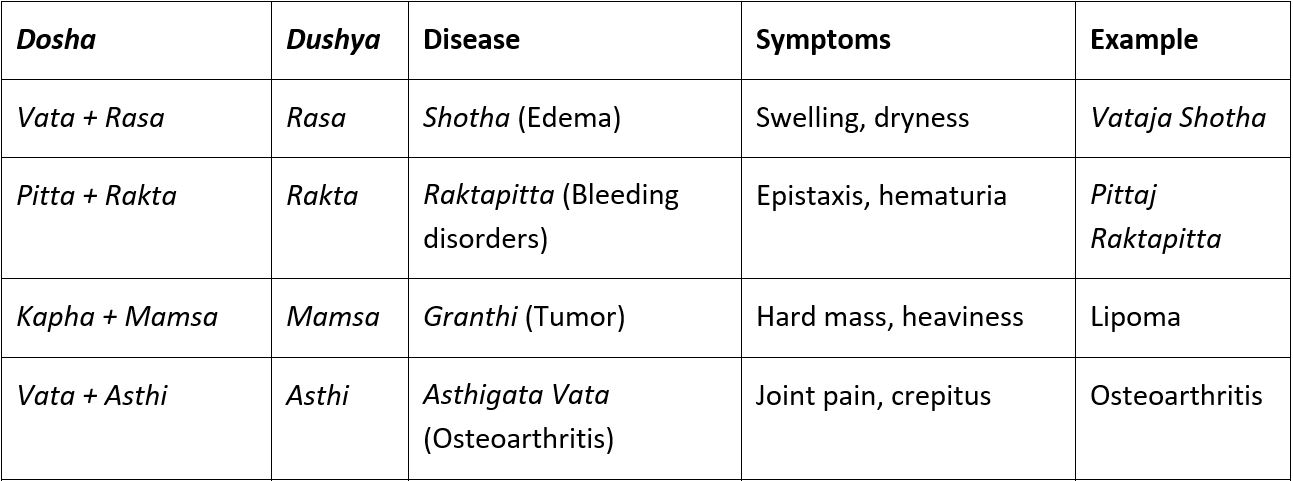Dosha Dushya Sammurchana in Disease Manifestation - A Review
DOI:
https://doi.org/10.21760/jaims.10.6.41Keywords:
Dosha - Dushya Sammurchchhana, Tridosha, Saptadhatu, Trimal, AyurvedaAbstract
According to Ayurveda, Tridosha, Saptadhatu, and Trimal are essential components of the body. Ayurveda is a discipline that addresses both therapeutic and preventive dimensions of human health. Dosha – Dushya Sammurchchhana plays a significant role in the causation of diseases that are crucial for both therapeutic and preventive approaches. Vyadhiutpatti has been defined as the mechanism through which disease develops. It comprises successive stages of pathogenesis leading to illness. Understanding Khavaigunya clarifies how the disturbed Doshas accumulate in a specific area of the body to cause disease while sparing other regions. The current study is a review of our classical Ayurveda literature that encompasses the concept of Shatkriyakala, a comprehensive description of Strotodushti and its varieties, elucidation of Khavaigunya, and Dosha-Dushya Samurchchhna concerning the development of disease.
Downloads
References
Charaka. Charaka Samhita, Chikitsasthana, Vatavyadhi Chikitsadhyaya, 28/20–23 [Internet]. Available from: http://niimh.nic.in/ebooks/echarak. Accessed 2020 Nov 9.
Sushruta. Sushruta Samhita, Sutrasthana, Dosh Dhatu Mal Kshaya Vriddhi Vijñaniya, 15/18 [Internet]. Available from: http://niimh.nic.in/ebooks/esushruta. Accessed 2020 Dec 8.
Vagbhata. Ashtanga Hridaya. With Sanskrit commentary by Arundatta and Hemadari; annotated by Kunte AM, Navre KR. Varanasi: Chowkhamba Sanskrit Sansthan; 2009. p. 183. (11/7).
Vagbhata. Ashtanga Samgraha. With Hindi commentary by Gupta KA. Varanasi: Chowkhamba Krishnadas Academy; 2016. Part 1. p. 153. (19/6).
Tripathi R. Charaka Samhita. Vol. 1. Delhi: Chaukhambha Sanskrit Pratishthan; 2007. p. 471.
Shastri KA. Sushruta Samhita. Vol. 1. Varanasi: Chaukhambha Sanskrit Sansthan; 2012. p. 117.
Upadhyaya Y. Madhava Nidana. Part II. Varanasi: Chaukhambha Prakashan; 2013. p. 19.
Shastri KA. Sushruta Samhita. Vol. 1. Varanasi: Chaukhambha Sanskrit Sansthan; 2012. p. 121.
Tripathi R. Charaka Samhita. Vol. 1. Delhi: Chaukhambha Sanskrit Pratishthan; 2007. p. 592.
Tripathi B. Ashtanga Hridaya. Delhi: Chaukhambha Sanskrit Pratishthan; 2012. p. 375.















